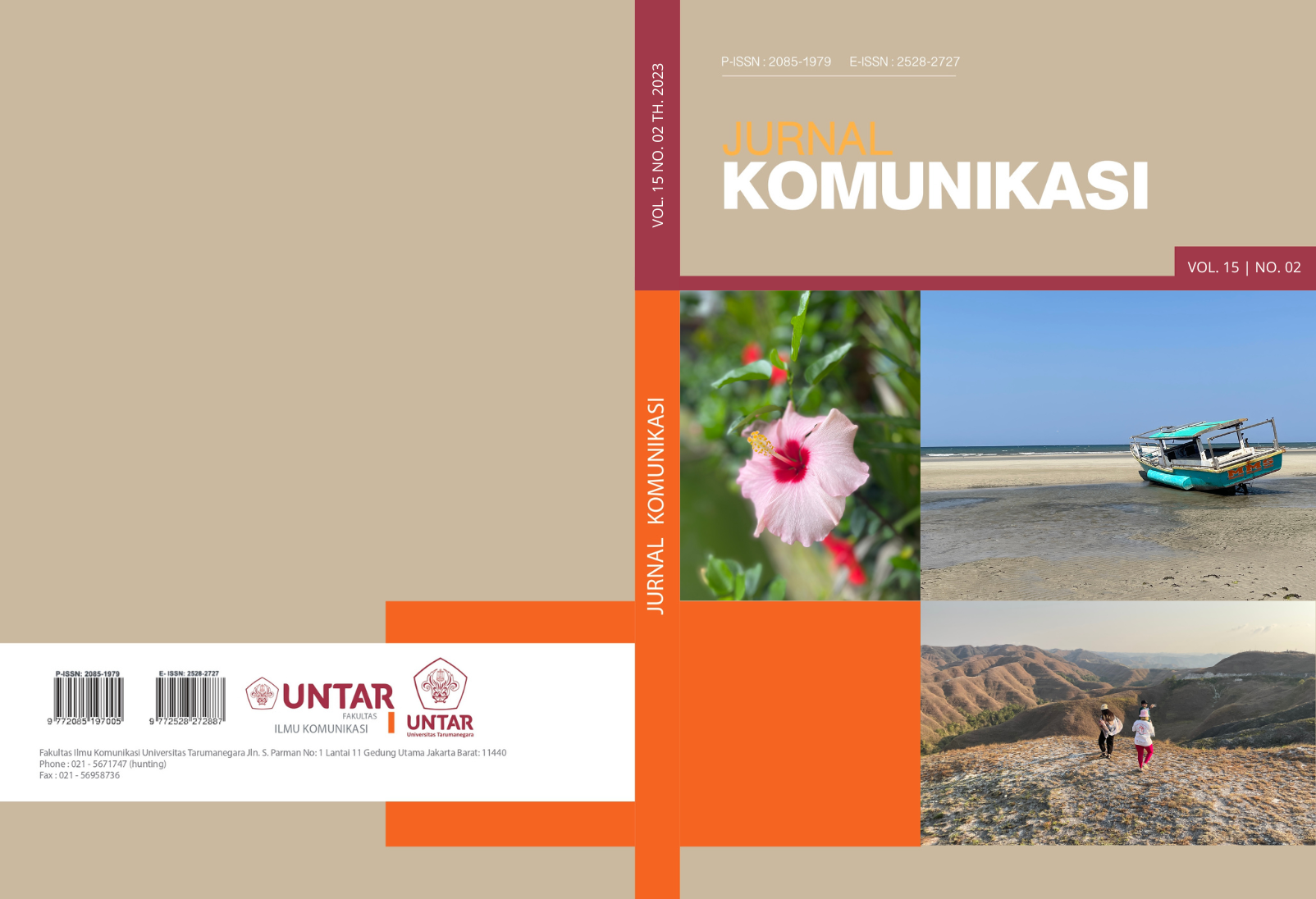Dangdut Koplo as a Manifestation of Popular Culture In Indonesia
Main Article Content
Abstract
One of the original works of Indonesians is dangdut music, more specifically, dangdut koplo. Dangdut music continues to grow, and the coming of dangdut koplo is accompanied by the human invention of information and communication technology, namely social media. This technology has succeeded in having a positive impact on the work of the nation, namely spreading dangdut koplo to all corners of the islands and even to the corners of the world. The objective of this simple piece of writing is to highlight a popular culture that occurs in Indonesia. One of the results of human thought, especially that of the people of East Java, in terms of art, especially music, can be a type of music that is light, pleasing to the ear, favored by people of all ages, strata, and social statuses, is able to eliminate all kinds of barriers in society, and can be an alternative form of entertainment. The objective of the study is to describe a new culture which emerged from the grassroot but it attracts international attention. The method used is the observation of communication phenomena that occur in society and literature study, which are then linked into propositions that can be used as subjects for the development of the scientific repertoire of culture and communication. It can be concluded that the emergence of dangdut koplo is clear evidence that everyone can produce a work that can be enjoyed by many people and can become a new culture in society that does not discredit previous works but instead strengthens and perfects previous great works.
Article Details
Section

This work is licensed under a Creative Commons Attribution-ShareAlike 4.0 International License.
This work is licensed under a Jurnal Komunikasi Creative Commons Attribution-ShareAlike 4.0 International License.How to Cite
References
Deddy, J. M., & Rahmat. (2014). Komunikasi Antarbudaya. Bandung: PT Remaja Rosdakarya.
Djatimurti, S. R. (2016). Ilmu Sosial Budaya Dasar. Yogyakarta: Penerbit Andi.
El Ishaq, R., & Mahanani, P. A. R. (2018). MEDIA SOSIAL, RUANG PUBLIK, DAN BUDAYA ‘POP.’ Journal of Communication, 3(1).
Fitriyadi, I., & Alam, G. (2020). Globalisasi Budaya Populer Indonesia (Musik Dangdut) di Kawasan Asia Tenggara. Padjadjaran Journal of International Relations, 1(3), 251–269.
Hanif, M. (2011). Studi Media Dan Budaya Populer Dalam Perspektif Modernisme Dan Postmodernisme. KOMUNIKA: Jurnal Dakwah Dan Komunikasi, 5(2), 235–251.
Hasanah, N. (2016). PEMAKAIAN BAHASA DALAM INTERAKSI SOSIAL NON FORMAL DI SEKOLAH SMA MUHAMMADIYAH 1 KARANGANYAR JAWA TENGAH: KAJIAN SOSIOLINGUISTIK. UNIVERSITAS AIRLANGGA.
Heryanto, A. (2012). Budaya populer di indonesia. Yogyakarta: Jalasutra.
Humaeni, A. (2013). Makna Kultural Mitos dalam Budaya Masyarakat Banten. Antropologi Indonesia.
Inderasari, E., & Ferdian, A. (2018). Styles of Repetition and Comparison Moral Message in Koplo Gener Dangdut Song (Gaya Bahasa Repetisi Dan Perbandingan Serta Pesan Moral Pada Lirik Lagu Genre Dangdut Koplo). Jurnal Gramatika, 4(2), 325–339.
Kamensky, E. G., & Boev, E. I. (2015). An innovation civilization in the context of the anthroposphere crisis of the technogenic society. Asian Social Science, 11(4), 328.
Luthfiyah, L. (2018). Kritik Modernitas Menuju Pencerahan: Perspektif Teori Kritis Mazhab Frankfurt. Tajdid: Jurnal Pemikiran Keislaman Dan Kemanusiaan, 2(1), 275–285.
Malinowski, B. (2015). A scientific theory of culture and other essays. UNC Press Books.
Prakoso, B. (2020). Tren Budaya Industri pada Lagu Didi Kempot: Perspektif Teori Kritis. ORASI: Jurnal Dakwah Dan Komunikasi, 11(1), 15–34.
Raditya, M. H. B. (2013). Dangdut Koplo: Selera Lokal Menjadi Selera Nasional. Jurnal Seni Musik, 2(2).
Raditya, M. H. B. (2017). Dangdut Koplo: Memahami Perkembangan Hingga Pelarangan. Studi Budaya Nusantara, 1(1), 10–23.
Rahayu, N. T. (2009). Tayangan Hiburan TV dan Penerimaan Budaya Pop. Scriptura, 3(1), 24–35.
Riezal, C., Joebagio, H., & Susanto, S. (2019). Kontruksi Makna Tradisi Peusijuek dalam Budaya Aceh. Jurnal Antropologi: Isu-Isu Sosial Budaya, 20(2), 145–155.
Seramasara, I. G. N. (2017). Perubahan Kreativitas Seni Sebuah Proses Simbolis Dalam Kategori Sejarah. Mudra Jurnal Seni Budaya, 32(2).
Setiawan, W. (2020). Makna Simbolik Budaya Marhabaan bagi Kalangan Nahdlatul Ulama. Hanifiya: Jurnal Studi Agama-Agama, 3(2), 55–66.
Setyaningrum, N. D. B. (2018). Budaya lokal di era global. Ekspresi Seni: Jurnal Ilmu Pengetahuan Dan Karya Seni, 20(2), 102–112.
Storey, J. (2018). Cultural Theory and Popular Culture: an introduction 5th Edition. Taylor & Francis.
Strinati, D. (2004). An introduction to theories of popular culture. Routledge.
Susanto, T. T., Atmaja, J., Nurdiansyah, C., & Alam, N. (2019). Mengungkap Fenomena Bahasa Campuran Pada Budaya Populer Dalam Perspektif Postmodern. Jurnal Trias Politika, 3(2), 170–181.
Tarigan, D. H., & Saputro, P. B. (2021). Peningkatan Nasionalisme Melalui Pembentukan Komunitas Cinta Musik Dangdut (KOMUDA) Sebagai Upaya Mengatasi Maraknya Musik Korea di Kalangan Remaja di SMA YADIKA 5 Jakarta Tahun 2020. Jurnal Pengabdian Masyarakat, 1(1), 36–43.
Ulfa, M. (2016). Perpaduan tuturan Jawa-Indonesia pada aspek religius Di desa Kamal Madura. Jurnal Ilmiah Buana Bastra, 3(1), 20–29.
Weintraub, A. N. (2010). Dangdut stories: a social and musical history of Indonesia’s most popular music. Oxford University Press.
Yusar, Y. (2015). Perlawanan Kaum Muda Terhadap Hegemoni Radikalisme Agama Dalam Bentuk-bentuk Budaya Populer. Jurnal Ilmu Sosial Mamangan, 4(1), 73–88.

